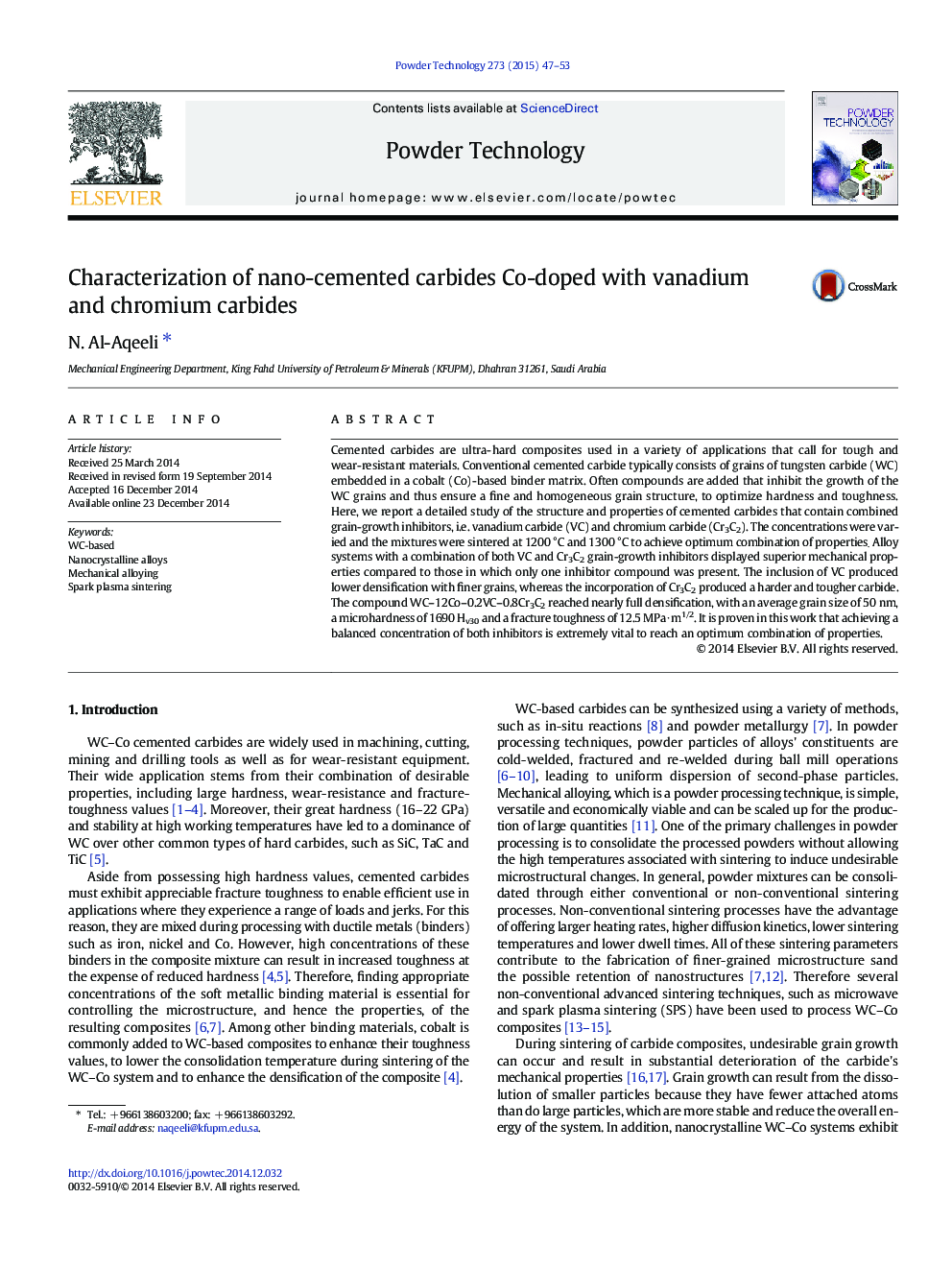| Article ID | Journal | Published Year | Pages | File Type |
|---|---|---|---|---|
| 235631 | Powder Technology | 2015 | 7 Pages |
•Conventional planetary ball milling process was used effectively in reducing WC particle size (3.5 μm to 10 nm), as well as in homogenizing particle size and compositional distribution.•A detailed study of the structure and properties of cemented carbides that contain combined grain-growth inhibitors of VC and Cr3C2 was carried out. The combination of both VC and Cr3C2 displayed superior mechanical properties over the addition of a single inhibitor.•The effect of each grain growth inhibitor was investigated and it was found that VC produced lower densification with finer grains, whereas the incorporation of Cr3C2 produced a harder and tougher carbide.•The use of SPS to consolidate the powder mixtures was beneficial to retain the nanocrystalline nature of the resulting alloy and the smallest grain size reached around 23 nm.•It is proven in this work that achieving a balanced concentration of both inhibitors is extremely vital to reach an optimum combination of properties.
Cemented carbides are ultra-hard composites used in a variety of applications that call for tough and wear-resistant materials. Conventional cemented carbide typically consists of grains of tungsten carbide (WC) embedded in a cobalt (Co)-based binder matrix. Often compounds are added that inhibit the growth of the WC grains and thus ensure a fine and homogeneous grain structure, to optimize hardness and toughness. Here, we report a detailed study of the structure and properties of cemented carbides that contain combined grain-growth inhibitors, i.e. vanadium carbide (VC) and chromium carbide (Cr3C2). The concentrations were varied and the mixtures were sintered at 1200 °C and 1300 °C to achieve optimum combination of properties. Alloy systems with a combination of both VC and Cr3C2 grain-growth inhibitors displayed superior mechanical properties compared to those in which only one inhibitor compound was present. The inclusion of VC produced lower densification with finer grains, whereas the incorporation of Cr3C2 produced a harder and tougher carbide. The compound WC–12Co–0.2VC–0.8Cr3C2 reached nearly full densification, with an average grain size of 50 nm, a microhardness of 1690 Hv30 and a fracture toughness of 12.5 MPa ∙ m1/2. It is proven in this work that achieving a balanced concentration of both inhibitors is extremely vital to reach an optimum combination of properties.
Graphical abstractFigure optionsDownload full-size imageDownload as PowerPoint slide
